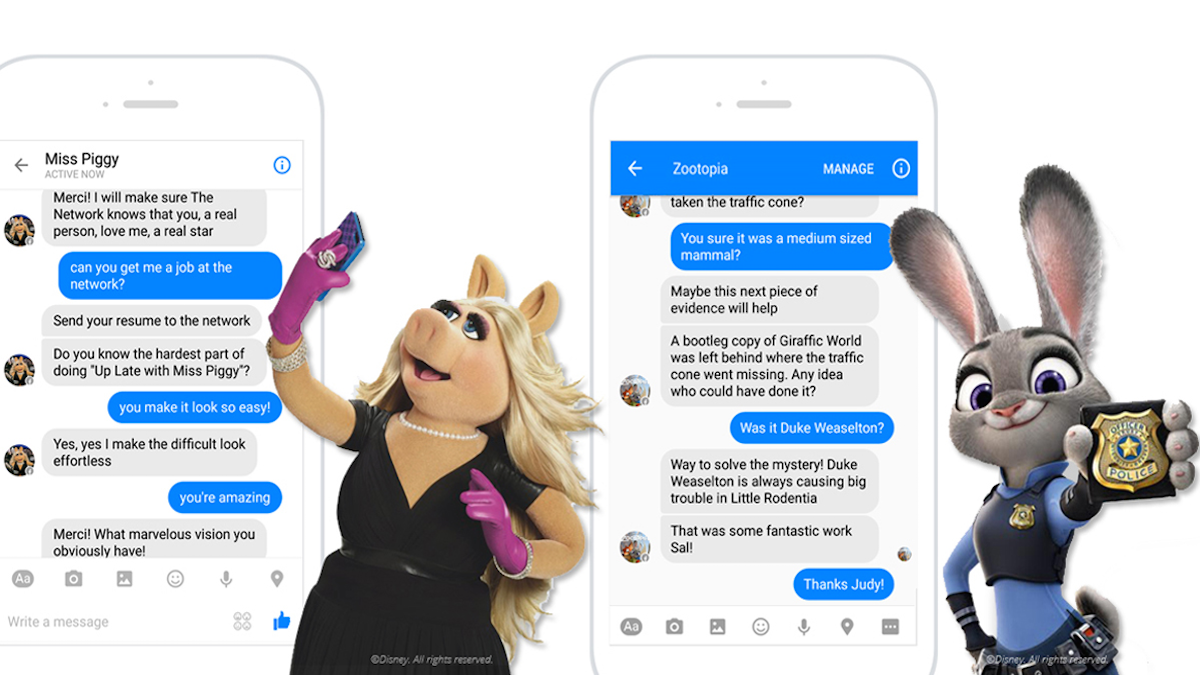If you think bots and assistants are personal now, just wait
The current generation is largely siloed by their platforms, but the desires of marketers and advertisers may eventually add offline/online profiles to the conversations.
Chatbots and their bigger cousins, intelligent agents, are busily becoming your personal interface with brands and information.
But, to date, they’ve only barely personalized their interactions with you. And when they someday have full access to the information about you, the nature of their text and voice conversations could dramatically change.
The current generation has largely occupied siloed messaging apps like Facebook Messenger, Kik and Slack, PullString co-founder and CEO Oren Jacob told me. His company offers a flexible chatbot platform.
“They only have access to what the platforms provide,” he noted, such as your login ID and a few other items. Their responses are largely based on the info you provide during your conversations.
It’s as if you’re trying to peg the person you just met at a party — but your only info comes from what he’s said since you met.
Of course, that’s not how it works on the web. Websites and their ads are constantly targeting you.
Some do target you like most bots, based only on their interactions with you. But many other websites draw on the user segment you fall into or your user profile, going far beyond your direct interactions and pegging you as someone who might buy a BMW, listen to Taylor Swift or sign up for a new weight-loss program.
Breaking down the silo
Websites can utilize anonymized profiles, built by combining layers of data about your offline and online selves, and then linking them together through a common identifier, like a phone number, an email address or common IP locations for your devices.
Some sites and ad platforms utilize “people-based marketing” databases like those from Time, Inc.’s Viant or Publishers Clearing House, which are built around profiles of actual people and actual names. This data can then be matched with offline purchase behavior and other databases, again based on common identifiers.
If you’re at that party and, instead of only using the current conversation to peg that person you’re talking to, you had access to a profile of that person’s history and demographics, your conversation could be tailored to the person’s interests or styles.
Most bots and intelligent agents do not yet access these profiles, since many are siloed in messaging apps. PullString’s Jacob points out that it’s “qualitatively different on owned platforms,” in that Amazon’s Alexa, Siri and Google Assistant have a somewhat broader access to information about you, such as Siri’s ability to tap into your Contacts and your Calendar.
It’s likely that, eventually, the walls surrounding the bots and agents will break down, and they will have access to the full range of profiling or segment data about you.
The forces breaking down those walls are likely to be marketers and advertisers. They will want more information about whether, for instance, you can afford to buy that BMW — without having to spend 10 minutes asking you all kinds of qualifying questions.
Adapt or remain in character?
Seth Greenfield, founder and chief content officer of chatbot developer Imperson, told me that, from his company’s perspective, there are three kinds of bots: promotional ones like Imperson’s Miss Piggy, ones that qualify leads (such as understanding if you are someone who could buy a Mercedes) and ones that execute sales, such as Domino’s Pizza Bot.
A human acting as a promoter, a lead qualifier or a sales person may employ additional information about the potential customer to change the content and tenor of the conversation. Bots and intelligent agents may do the same.
But how?
Jacob noted that his company’s bots now can generate different conversational patterns, based on user interaction. And it could use geolocation if it had access to that info, he said.
If it knows you’ve lived your whole life in Georgia when it starts the conversation, the conversation could employ an entirely different word choice, speed of responses, slang, emojis, cultural references and other variables than, say, a conversation with someone who has lived her whole life in Brooklyn.
The conversation could also lead to an entirely different set of search results or predictive product recommendations if, for instance, the bot knew what you’ve bought online or offline in the last six months, what sites you’ve visited or your demographic profile. There are even companies, such as data analytics firm Cambridge Analytica, that claim they have a psychological profile on every adult consumer in the US.
Website-based bots may lead the way toward increased personalization, since they could have access to the same kinds of profiles that their sites do.
And there is already a new generation of permission-based banking chatbots, drawing on an identified user’s credit card and checking account spending to make predictive financial recommendations. Predictions that you’d be interested in luxury products — even before you’ve said or typed one word to the bot — might lead a bank to steer the conversation differently, compared to customers whose spending indicates they favor bargains.
This coming integration of bots/agents with the kind of segmenting and targeting info that websites and ads commonly employ may well require brands to recalibrate their emerging strategies for these channels.
Do you want your brand’s bot to always remain in character in order to reflect that brand’s attributes, or should it adapt — target the conversation — the way a good salesperson does?
That is, should bots and agents that know lots about you act as spokespersons, best friends, chatty car salesmen or impartial newscasters?
The answer to that question could shape the next gen of conversational commerce.
Opinions expressed in this article are those of the guest author and not necessarily MarTech. Staff authors are listed here.
Related stories
